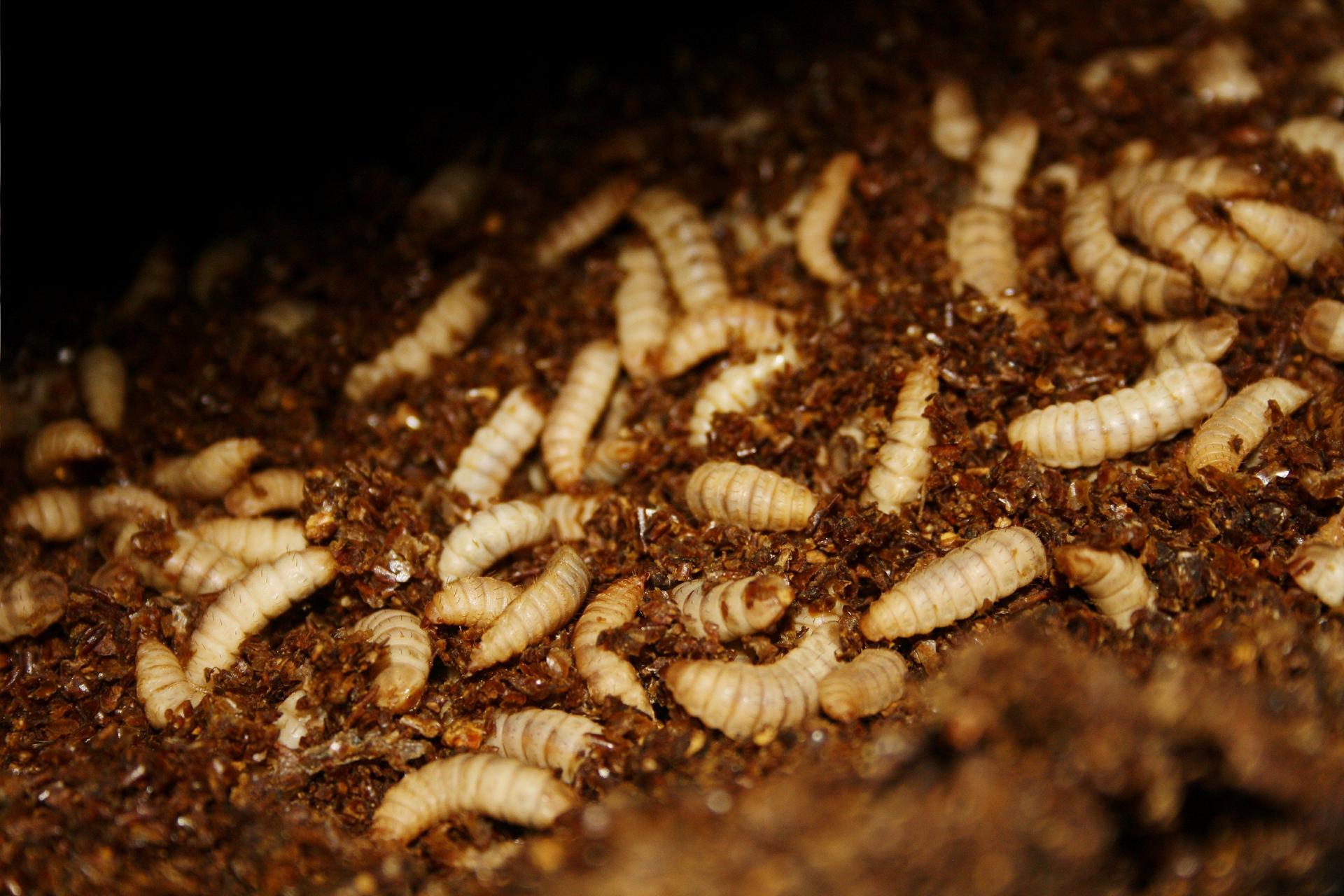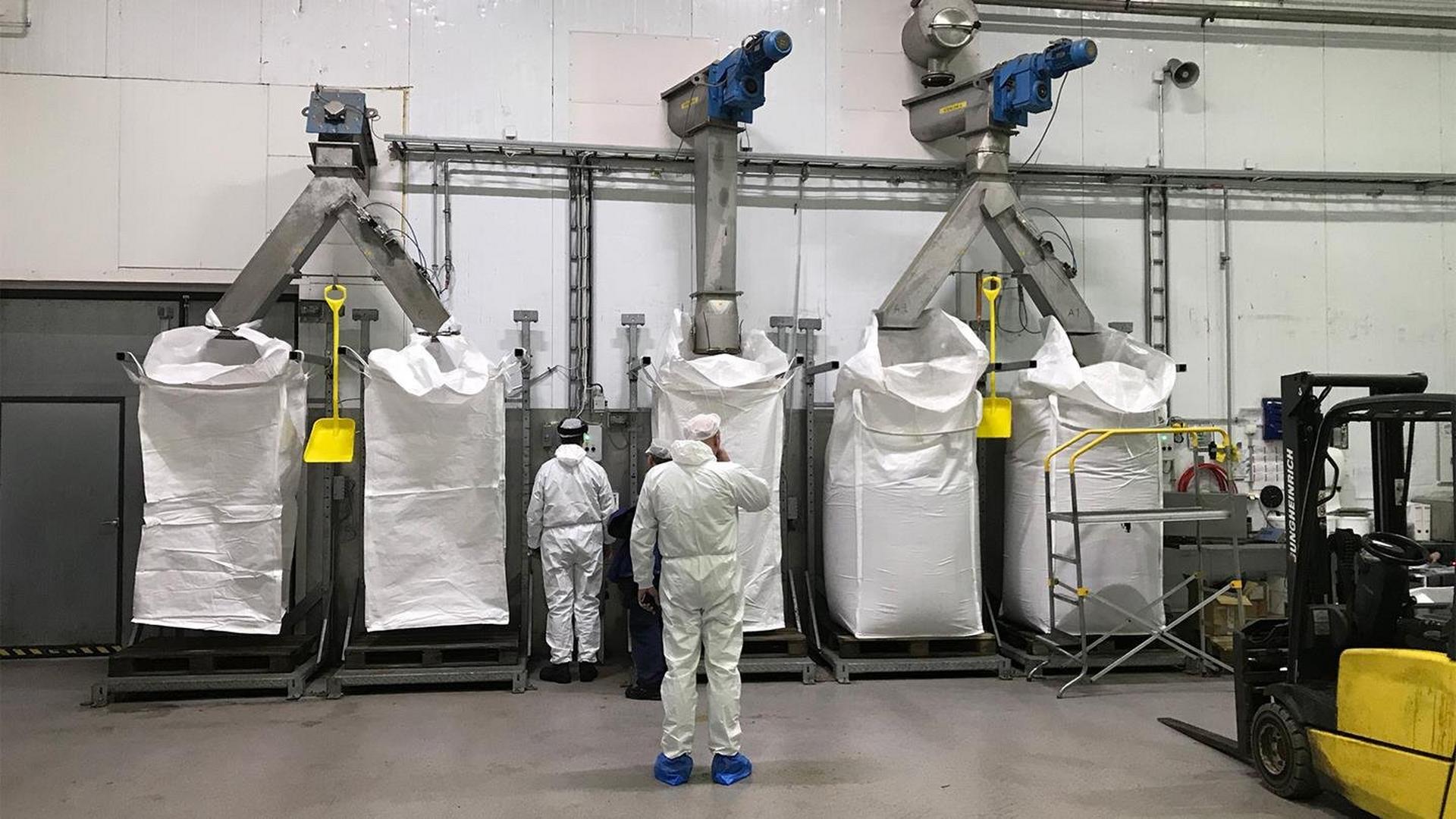- Klimaindsats
Klimaindsats
BioMar er en frontløber hvad angår emissionsreduktion inden for vores branche.
Every year, billions of chickens are processed for food - leaving behind mountains of feathers. While most see this as waste, aquaculture nutritionists see something else entirely: opportunity. These feathers, once destined for landfills, are now being transformed into a high-protein, sustainable ingredient known as feather meal.
Feather meal is made from clean, sanitized poultry feathers, a byproduct of poultry processing. In their raw form, they’re indigestible to fish. But thanks to a process called hydrolysis - which uses high pressure and heat - these feathers are broken down into a digestible protein meal ideal for aquaculture. This transformation turns a challenging waste stream into a valuable asset, reducing environmental impact and supporting circular economy goals. Processed feather meal can contain up to 85% crude protein, making it a powerful addition to fish diets especially for carnivorous species like salmon and trout. It’s particularly rich in the amino acid cystine, supporting tissue growth and repair.

By re-purposing poultry feathers, we avoid landfill waste and reduce the need for resource-intensive ingredients.
Feather meal reduce the need for land and water: Compared to plant-based proteins like soy, feather meal requires zero additional agricultural land and no irrigation - it’s a true byproduct. The poultry industry generates over 5 million tons of feathers globally per year - enough to fill more than 60 Olympic-sized swimming pools!
Outside of fish farming, feather meals are also valued in agriculture as a slow-release organic fertilizer, thanks to its high nitrogen content. But in the aquaculture world, its main strength lies in its protein profile and sustainability benefits.
Feather meals aren’t just for fish or fertilizer - researchers are exploring their use in bioplastics, textiles, and even battery electrodes! In the U.S., feather fibers have been tested as insulation material in jackets, offering a cruelty-free alternative to goose down.
Trout and salmon digest feather meal better than many think. These species naturally consume high-protein diets, and when feather meal is used in the right amounts and combinations, they support excellent growth rates. Feather meal contributes to lower phosphorus levels in aquaculture effluent, making it a good fit for environmentally conscious farms. Feather meal is rarely used alone, it works best as part of a balanced formulation strategy, where it complements other ingredients to meet the complete nutritional needs of fish. When used thoughtfully, feather meal helps maintain nutrient balance, supports muscle development, and can even contribute to better flesh quality.

Fun facts:
Feathers are 90% keratin.
2.5 kg of feathers = 1 kg of feather meal and when formulated properly, it contributes to high feed efficiency without compromising growth performance.
Feathers contain the same tough protein found in human hair and nails.
Properly processed feather meal is highly digestible - a big shift from its raw form.
Feathers are stronger than you think: The keratin in feathers is one of the toughest natural proteins. Pound for pound, it’s stronger than steel in tensile strength.
Feathers are ultra-light: Despite their strength, feathers are extremely lightweight. This makes processing and transportation of feather meal more energy efficient per protein unit compared to bulkier ingredients.
By giving feathers a second life in aquaculture feeds, we’re not just feeding fish - we’re feeding the future. Feather meal is a powerful example of how innovative thinking and smart nutrition can turn waste into value, improve feed sustainability, and help build a zero-waste future in fish farming.
Resultater (60)

BioMar er en frontløber hvad angår emissionsreduktion inden for vores branche.


Specialized BioMar feeds designed for performance, resilience, and efficiency in cold-water conditions Winter brings real challenges for trout farmers. As temperatures drop, metabolism slows, appetite declines, and maintaining growth can feel like an uphill battle. BioMar’s winter feeds are developed to keep your fish progressing through the toughest months delivering reliable intake, efficient conversion, and strong resilience all winter long.

FLAG-emissioner (Forest, Land and Agriculture) vil være vigtige, når akvakulturindustrien skifter til produktion med lavere kulstofindhold. Disse udledninger, som nu spores under Science-Based Targets-initiativet (SBTi), stammer fra arealanvendelse og landbrugsaktiviteter snarere end fra energiforbrug.
?w=1920&%24withDefaultImage%24=&fmt=auto)
Hos BioMar forstår vi, at rejsen til enestående fisk og rejer begynder længe før, den når bordet, og den starter med det foder, der giver næring til fisk og rejer.

Efter mange års R&D arbejde betragtes insektmel nu som en lovende ny ingrediens, der er stærkt på vej til at blive accepteret og en bred portefølje af insektmel til akvakultur er på vej ind på markedet.

Slagteklare laks blev analyseret for at bestemme den spiselige del. Resultatet viste, at hele 74 procent af laksen bestod af rent fiskekød.

The oxygen content of the water is often the most prominent limiting factor in intensive fish farming. It is a well-known fact that poor oxygen content means that it is not possible to utilise the full potential of both the fish and the feed. A jet platform is an example of an efficient and yet simple mechanical method for oxygen enrichment of water.

BioMar har adskillige måder at sikre, at deres råvarer er sikre og indkøbt ansvarligt.

Fisk og skaldyr er meget tilpasningsdygtige og har brug for omkring 40 essentielle næringsstoffer, som kan komme fra forskellige råmaterialer, herunder marine ingredienser, animalske produkter, korn og nye kilder. Denne tilpasningsevne er afgørende for branchens vækst og vil give mulighed for forskellige foderformuleringer.

At the BioMar factory in Denmark, we assist salmon and trout farmers with tailored solutions, backed by our technical expert team, BioFarm. These advisors are dedicated to sharing knowledge on pigmentation strategies, helping our partners achieve top-quality fish fillets.

As the fourth most-produced oilseed meal globally, sunflower seed meal offers a strong balance of nutritional quality, affordability, and sustainability that supports the evolving needs of fish and shrimp producers.